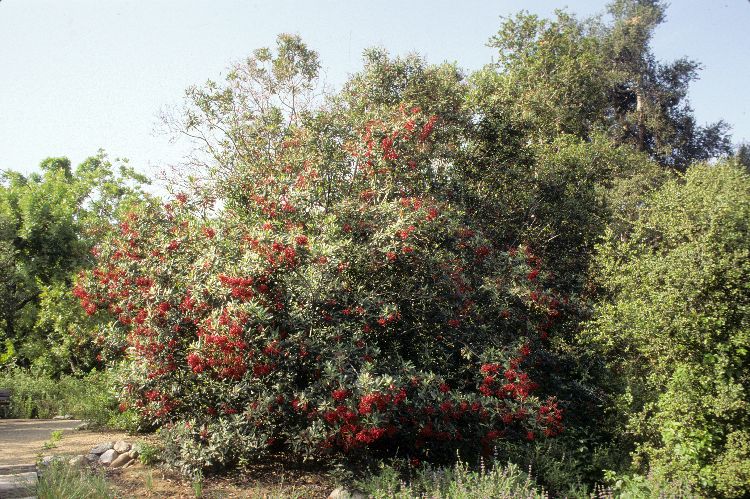Tree habitat overview
Junglans Californica // California Black Walnut
Southern California Black Walnut
A sensitive species with a Class 4 protective status. There are four on site and three off-site located just south of the project’s southern lot line.
Heteromeles arbutifolia // Toyon
Toyon
An essential component to the Black Walnut ecosystem and on the city list of proposed trees to protect. The Toyon require very little water and are fire resilient while being useful for controlling soil erosion in hillsides. In 2012, the Toyon was named the official Native Plant of the City of Los Angeles. Due to its green leaves and the red berries it produces, the Toyon is also sometimes referred to as the Christmas Berry or California Holly, and, because of this, the shrub has long been rumored to have been the naming inspiration for Hollywood, due to its prevalence in the area that is now the Hollywood Hills. The Toyon also has special significance for local Native American Tribes. In addition to the shrub holding the unique distinction of being one of the only native California plants that has maintained its Native American name, the Toyon’s berries were a valuable source of food and medicine for the Chumash, Tongva, and Tataviarn tribes.
Sambucus mexicana // Mexican Elderberry
Mexican Elderberry
An essential component to the Black Walnut ecosystem and on the city list of proposed trees to protect. The Mexican Elderberry is significant for the cover it provides small nesting birds, as well as for the partial shade it creates that facilitates ground cover growth. Young pheasants and quail can often be found feeding underneath the shrubs, demonstrating the Mexican Elderberry’s importance in local ecosystems. They are also known to attract at least 50 species of songbirds, upland game birds, and small mammals. The Mexican Elderberry is also fire resilient, and useful for controlling soil erosion. In addition to how Mexican Elderberry shrubs benefit the ecosystems in which they are naturally found, the shrub was also historically significant to local Native American tribes, who not only ate the berries for food, but also utilized them as medicine.



